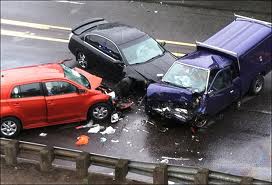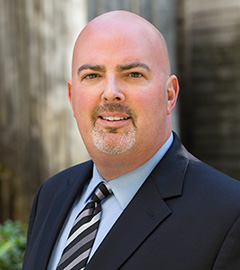Who is to Blame in a Multiple Car Accident?
Posted Monday, November 19, 2012 by Chris Thayer
If you are in a car accident that involves multiple cars, determining the amount of fault attributable to each driver can be difficult and complicated. Taking photographs of the relative position of the vehicles (if safe to do  so), getting the names and contact information from all witnesses, and making sure the police are called to the scene are all helpful. There can be more than one party at fault for causing a collision.
so), getting the names and contact information from all witnesses, and making sure the police are called to the scene are all helpful. There can be more than one party at fault for causing a collision.
Following Car Doctrine
In a rear end collision, the car which fails to come to a stop and strikes the car in front of it is almost always going to be considered at fault for causing the collision. This is known as the Following Car Doctrine. There are exceptions, but they are rare and only arise out of fairly atypical situations.
In what I call “sandwich collisions”, there are three or more cars in a line that get stacked up. Imagine a line of three cars and the last car in line (car 3) strikes the car in front of it (car 2) so hard that strikes the car in front of it (car 1); in most cases the driver of car 3 will be considered at fault – and no fault or liability will be attributed to car 2 – unless it can be shown that 2 was also negligent in some way.
Comparative Fault

Washington law allows for the fault (i.e. liability) for causing an accident to be attributed to more than one party. This ultimately is a question for the jury to decide if you have to file suit. In Washington, where you have a fault free plaintiff, there is what is known as joint and several liability for the at fault defendants.
Joint and Several Liability
Example: You (the plaintiff) are in car 1 and involved in an accident with two other people (defendants) in car 2 and car 3, both defendants are negligent and you are “fault free” but are seriously injured in the accident. In this situation, the jury would ultimately have the duty of apportioning fault for causing the collision between car 2 and car 3. Because of the “joint and several liability” under this situation, even if only 10% of the fault were attributed to car 2 and 90% to car 3 – you would have the right to collect the full judgment from either car 2 or car 3 (but no double recovery allowed).
Insurance Companies
Insurance companies, when negotiating with unrepresented parties, often try to take advantage of claimants by  claiming that a portion of the fault for a collision was attributable to someone else. Determining liability and fault can be confusing and involves understanding and interpreting Washington case law and statutes. It is important to not let insurance companies take advantage of you by trying to convince you to settle for less than a fair amount.
claiming that a portion of the fault for a collision was attributable to someone else. Determining liability and fault can be confusing and involves understanding and interpreting Washington case law and statutes. It is important to not let insurance companies take advantage of you by trying to convince you to settle for less than a fair amount.
Hire a Personal Injury Lawyer
If you find yourself in a situation where the insurance adjuster is trying to argue that you should accept less money than you believe you are entitled to because of an argument that some other party is at fault; you should talk to an experienced personal injury attorney to make sure that your rights are protected and that you are being treated fairly.
